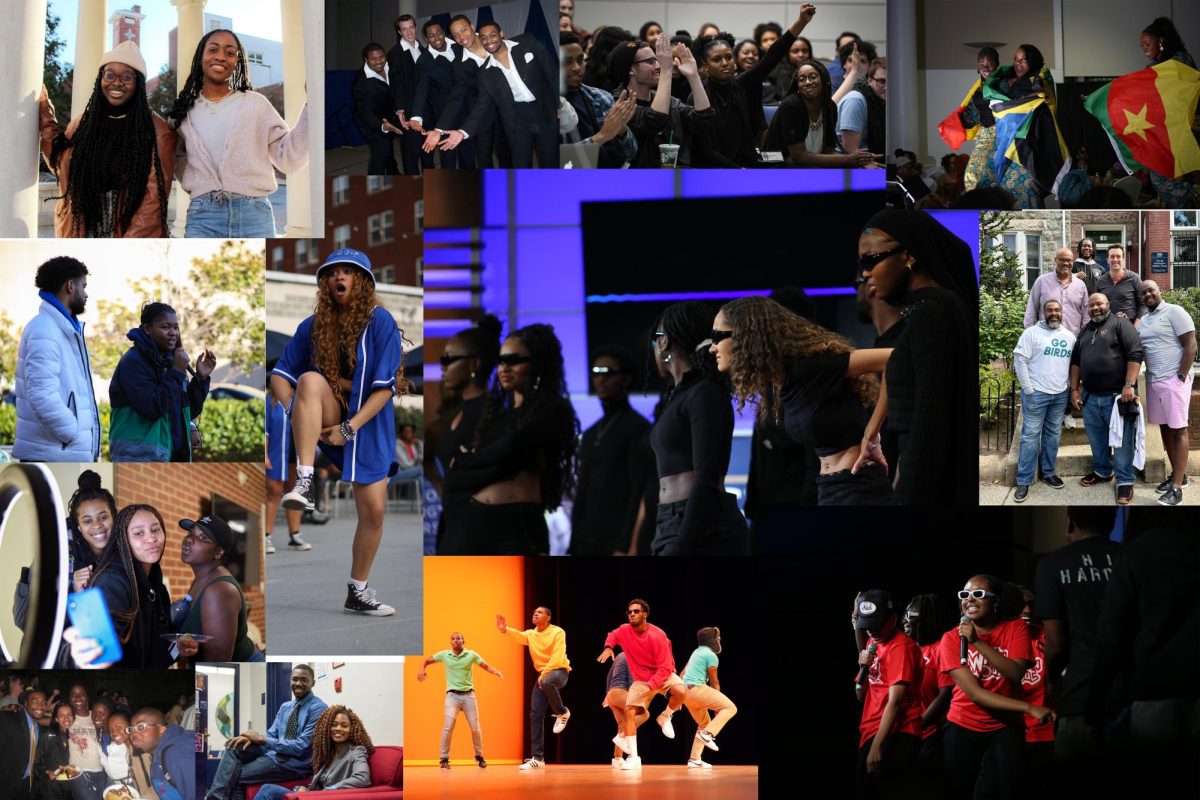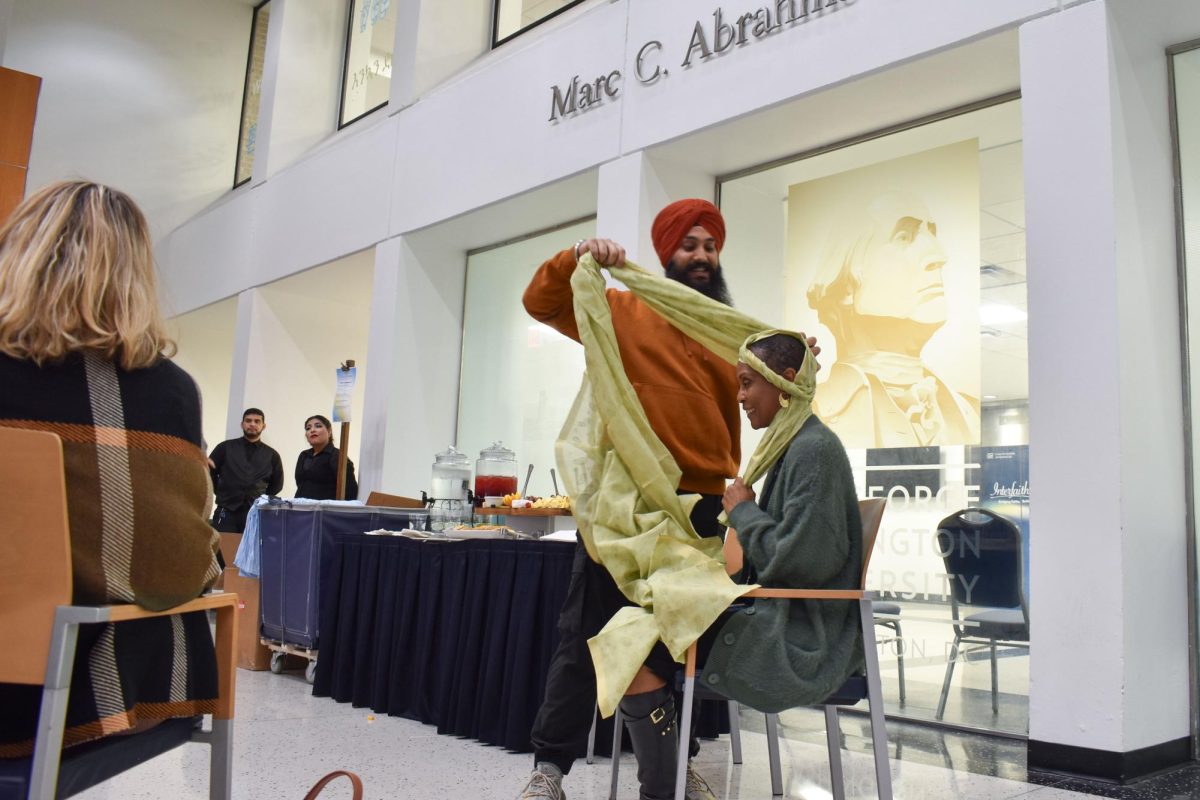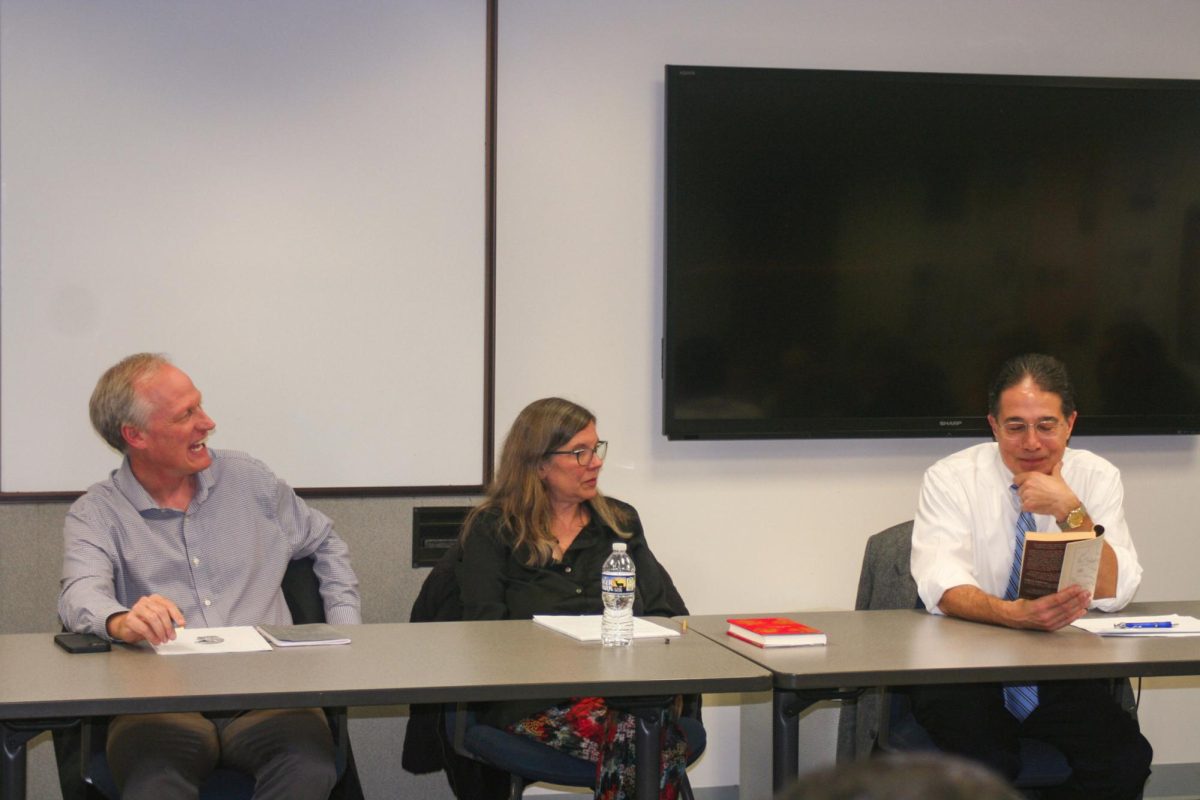In 1954, GW officially desegregated after the Brown v. Board of Education Supreme Court decision, becoming the last university in D.C. to drop its discriminatory admissions policies.
In the years that immediately followed, GW was slow to develop formal initiatives to welcome Black students to campus and the University remained shadowed by the segregationist policies put forth under former University President Cloyd Heck Marvin, even as the Black population in the District grew rapidly.
Seventy years after GW’s desegregation, alumni reflected on the growth of the Black community at GW that has become an integral component of the campus culture despite the University’s discriminatory history. As the 70th integrated class joins campus, Black alumni revisited moments during their time at the University that proved pivotal to the expansion of GW’s Black community, from the establishment of Black Greek letter organizations to ongoing Black student activism throughout the years.
Building Black journeys
Jacqueline Jones, a 1976 alum and a former Hatchet reporter, said she decided to transfer to GW in 1973 after not finding her “groove” at Fordham University. Jones, a D.C. native, said she made her decision after learning that Howard University’s newly established journalism program was only available to current students.
“I genuinely didn’t know what I was going to do until I just decided that I needed to go back to school and get my little piece of paper and figure out what I was going to do with myself,” Jones said.
Jones said when she attended the University, most Black students were D.C. residents and often commuted to classes, causing many to be inactive in the then-Black People’s Union at GW — now known as the Black Student Union. Before moving to the University Student Center, the Black People’s Union was housed in the former Multicultural Student Services Center townhouse on G Street, according to archival documents about the MSSC and the Educational Opportunity Program, which formerly offered full tuition and support for multicultural students.
Jones said the office was a place where students could receive advice on topics including financial aid and academic tutoring.
“If you go over there and hang out, somebody would come and you say, ‘Hey, I need help with this,’ and they’d help you with your homework,” Jones said.
Jones said there was a “sizable” number of Black students when she was a student and she was met with curiosity from her non-Black peers about Black culture. She added that she didn’t experience many racially insensitive comments as a student, with the exception of one professor who would constantly use the term “negro” even as the word was rapidly losing its acceptability.
She said at the time, Black students would attend social events off campus at local D.C. nightclubs and connect with friends at Howard at events like their annual homecoming. Decades later, the proximity and cultural significance of Howard, which some refer to as “The Mecca,” has continued to attract Black GW students to get the “HBCU experience” while attending a predominantly white institution.
Kylie Foster, a 2023 alum, said there’s many events that Howard extends to students at other universities “with their open arms,” but students at other campuses must actively seek them out.
“To be able to flourish academically at GW but gravitate more on a social and cultural front at Howard, it was definitely a privilege and it’s one I don’t take for granted at all,” Foster said.
Building Black Unity
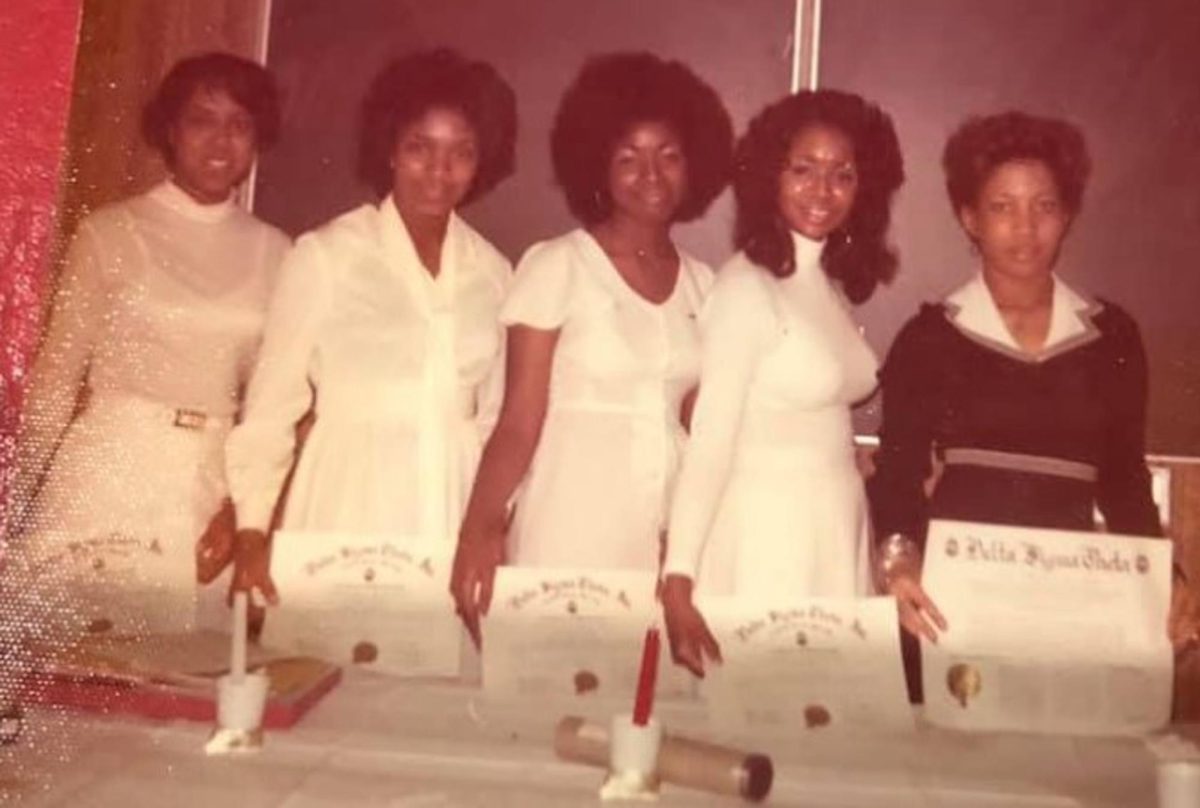
On April 20, 1975, nine women chartered the Mu Beta chapter of Delta Sigma Theta Sorority, Inc., securing the chapter’s status as the first Black Greek letter organization established at GW.
Tanya Goodman, a 1976 alum and one of the founding charter members, said before the chapter was launched at GW, the organization was doing “wonderful” things in the overall D.C. community, like providing affordable housing for senior citizens, which led her and other members to establish the chapter.
“It seems like it was a rite of passage,” Goodman said. “I never considered that a predominantly majority [white] university at that time would not have a Black sorority, a Black fraternity — that didn’t occur to me, so I’m glad that we were able to bring that together.”
Goodman said the establishment of Delta Sigma Theta Sorority, Inc. grew GW’s presence among members of the Black community beyond the D.C. metropolitan area and showed Black students that their culture, heritage and traditions were a recognized part of the University community.
“It’s really uplifting for the Black community, whether you are a member of a Greek sorority or fraternity at GW or not,” Goodman said.
Building Black spaces
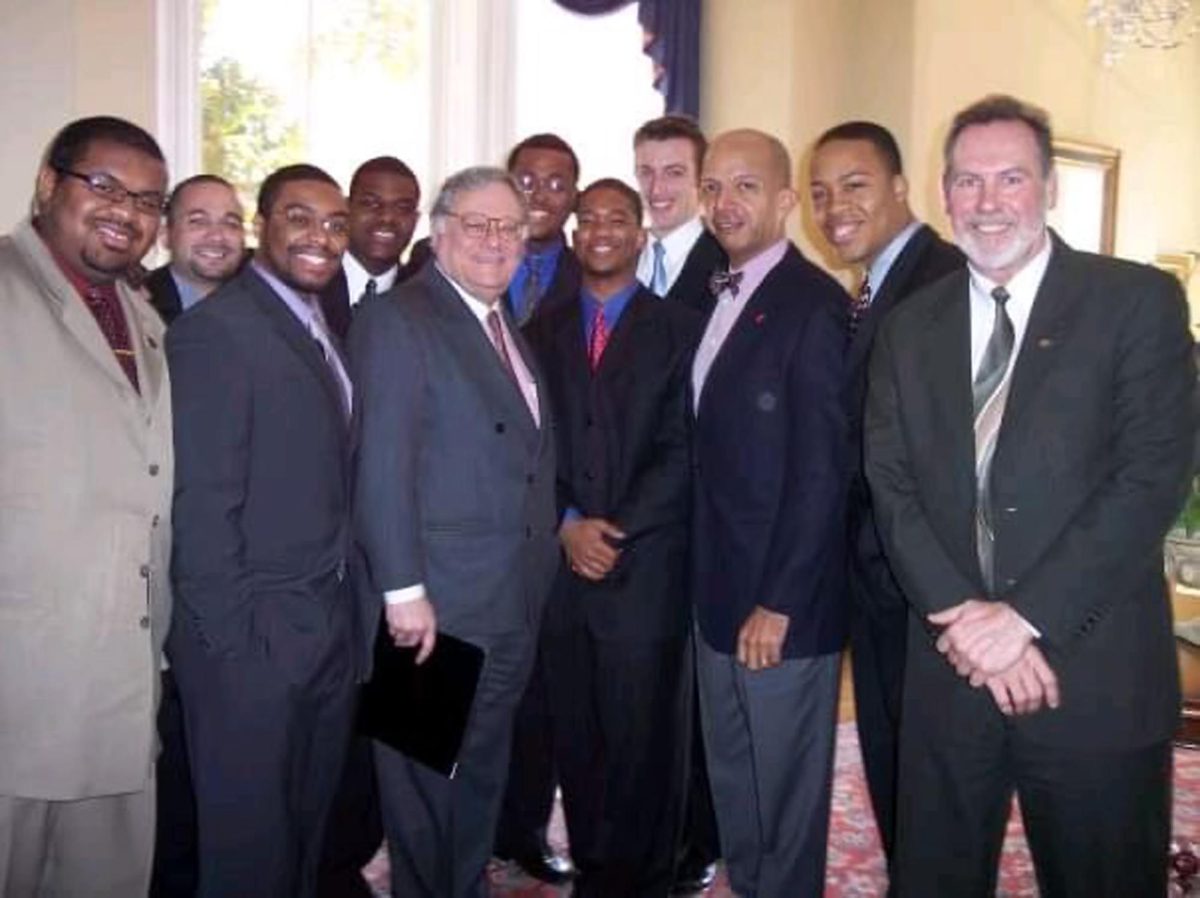
Fresh out of the Los Angeles area, 2006 alumnus Stephen Harris was eager to come to GW until the stress of the 9/11 attacks and other personal events caused him to become disengaged with his academics and student organizations. Harris said his sophomore year roommate, Paul Kendrick, was his “guardian angel” who suggested he join Black student organizations like the Black Student Union, where Harris later served as its co-president.
Within residence halls and on campus residential buildings, the University offers Living-Learning Communities that allow students with common interests to live with each other. Harris said in 2003 he spoke to Kendrick and another founder of the house, Omar Woodard, and suggested that they write a proposal to establish a new LLC for Black students to foster the community’s leadership.
He said the group chose not to officially title the space its colloquial name — “The Black House” — to avoid negative racial stereotypes, instead opting to name it the George Washington Williams House because of the namesake’s legacy as the first historian on Black history.
After officials approved the proposal in 2004, Harris said the group wanted the living affinity to last longer than one year, which at the time was the condition for all LLCs. Harris said he and the eight other original house members publicly pressured administrators to preserve the space for future years including by inviting then-D.C. Mayor Anthony Williams to the house and asking him if he felt the space should be permanent.
He said the weight they placed on officials also motivated the members to hold themselves accountable, ensuring they avoided a bad reputation that would jeopardize their efforts to keep the house.
“We were like, just don’t f*ck it up,” Harris said.
Harris said the decision to preserve the Williams House was “never formal.” But after Harris accepted the MSSC’s Martin Luther King, Jr. Community Service Award and delivered a speech about the service that Williams House residents had spearheaded while living in the space that the University told him the space would be renewed, he said.
“That was it,” Harris said. “I didn’t get anything in writing. I didn’t get a memo. It’s not living on the GW website, or anything like that, but that was good enough for me at the time, and they kept their word.”
Bernard Demczuk, the former assistant vice president for district relations and faculty advisor of the house until his retirement in 2017, said he emphasized having consistent educational programming to house members during his tenure. He said he took residents on walking tours of Black historical landmarks in D.C., including Ben’s Chili Bowl, and once a month, residents would host an event on a research topic of choice.
Gabrielle Bass, a 2009 alum who lived in the Williams House starting in her sophomore year, said it was “huge” to see GW make an investment in the house’s preservation, adding that its continued presence on campus shows the house’s persistent value to the community.
“Whatever it is that’s plaguing us at the time, you literally have like an enclave to hide from all of that,” Bass said.
More than a decade after the creation of Williams House, 2019 alumna Imani Ross would establish another affinity living space for women of color in District House when the residence hall first opened in 2016. Ross said the affinity provided a sanctuary for Black women where they could “just exist” without feeling judged or singled out and became a “safe haven” especially during the 2016 election.
“We had different women and Black students come,” Ross said. “They were staying at the dorm at the time because they didn’t feel safe, whether they had a racist roommate or just did not feel comfortable with their roommates.”
Building Black voices
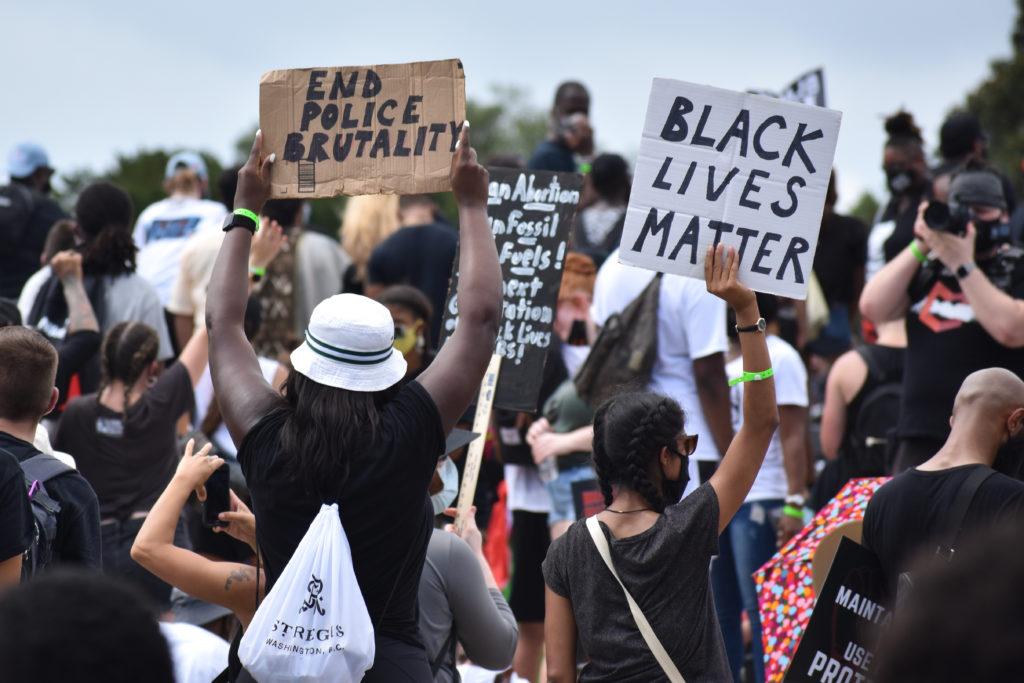
Whitney McGuire, a 2008 alum, said her time at GW was filled with racist incidents and microaggressions targeted at Black students including swastikas and the N-word posted on Black students’ doors, and students devaluing Black athletes’ academic achievements. McGuire said there was also campus “debate” at the time over whether Africana Studies should be an undergraduate minor, as well as the Jena Six case, where racial tensions at a Louisiana high school led to police arresting six Black students for attacking a white student.
“It’s just like, so much to even recount,” McGuire said.
Christian Washington, a 2006 alum and 2009 law school graduate, said the Jena Six case started the “modern iteration” of Black student activism, with students engaging in campus protests to show their solidarity of the arrested students. Washington, who worked at the MSSC at the time, said the center wanted to help students protest effectively and connected students to University officials to make their voices heard.
“What we wanted to do was make sure that they were doing it in a way that was safe for them,” Washington said. “Things were as controlled as they could be without losing the point of the message and making sure it was understood that there was a lot of displeasure and a lot of concern about incidents like that happening around the country.”
In February 2018, a racist Snapchat post made by members of the Alpha Phi sorority again placed the University’s history of racial tensions back in the spotlight. Ross, who attended a town hall about campus racism that same month, said the room had “hundreds” of students with many sharing personal testimonies and demanding officials take more action to address racist incidents, yet some expressed skepticism over the mandatory diversity training policy that officials announced after the incident.
“It broke so many people’s hearts,” Ross said.
After the murder of George Floyd by police in late May 2020 in Minneapolis, worldwide protests calling for justice for Floyd and his family erupted, fueling the Black Lives Matter movement dedicated to stopping police brutality and racial inequity. GW students were active the movement, with many participating in forms of civic action like local demonstrations and fundraisers for Black advocacy organizations.
In 2021, the Board of Trustees announced they would change the name of the then-Cloyd Heck Marvin Center to the University Student Center following decades of student activism to change the building’s name due to the late namesake’s segregationist history.
The University has since changed the names of the former Colonials moniker and the Marvin Center, but Foster, a 2023 alumna, said she urged current Black student leaders to reamplify the proposals for other building name changes including Fulbright and Madison Hall.
“I think that continuing the conversation is definitely should be put on the priority list because you urge the institution to do something about it,” Foster said. “That opens the gates to diving deep into the issue at hand, which are a bunch of critical issues about slavery and abolishment, but then segregation and a historical trend and pattern of injustices, so if we’re to say that GW is a liberal institution at large, then let it reflect such.”


